When I read on Sites & Bites that Big Brutus was the World’s Largest Electric Shovel, I’d pictured it being some kind of oversized battery-powered garden shovel.
It turns out that I slightly underestimated its size.
And by slightly, I mean immensely. And by size, I mean a 9.3 million lb behemoth. Here’s the scoop about what it’s like visiting Big Brutus in West Mineral, Kansas.
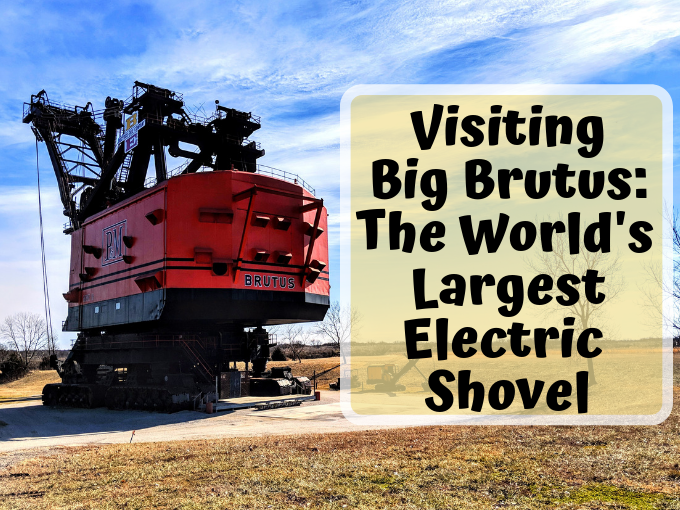
Seeing as I was expecting an oversized shovel, I thought it’d be a standard roadside attraction where you stop by, take a photo and then head on to the next thing.
Big Brutus is vastly different for a couple of reasons. First, you’ll want to set aside about an hour or more to get the full experience. Second, it’s not an attraction you can stop next to for a photo opportunity. Instead, it’s an experience which includes a museum and the opportunity to head up inside the machine.
Big Brutus Museum
The museum contains information all about Big Brutus, along with other exhibits from the local area. It’s located in West Mineral which is in the southeast corner of Kansas, near the borders of Missouri and Oklahoma.
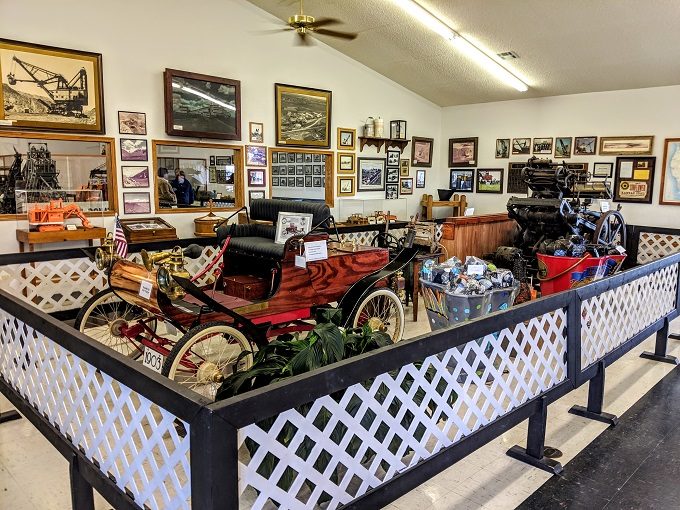
The museum includes Little Giant, the world’s smallest working replica of an early-day electric mining shovel. It was built to scale with one inch representing one foot of a real machine.
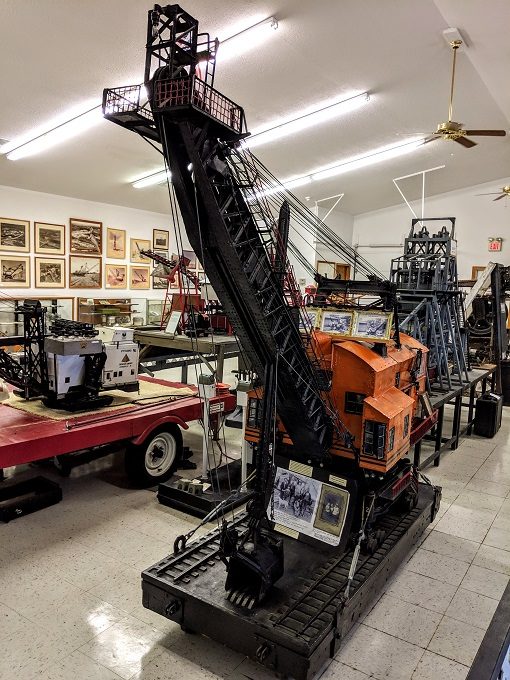
After wandering around the museum for a little while, we headed outside to check out the full-size version. Lining the path to Big Brutus were several additional exhibits; similar to the museum inside, some related to Big Brutus while others were pieces from the local area.
There was a 40 cubic yard dipper, the bucket that’s used by electric shovels for digging out dirt and rock…
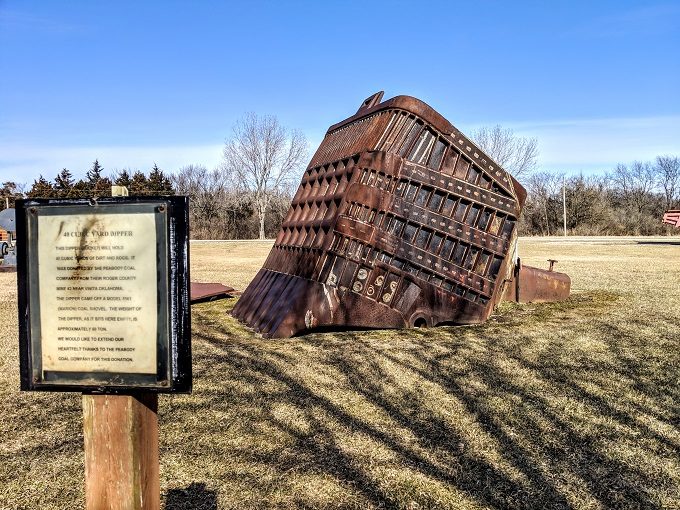
…while the path itself was lined with Big Brutus’s hoist cable.
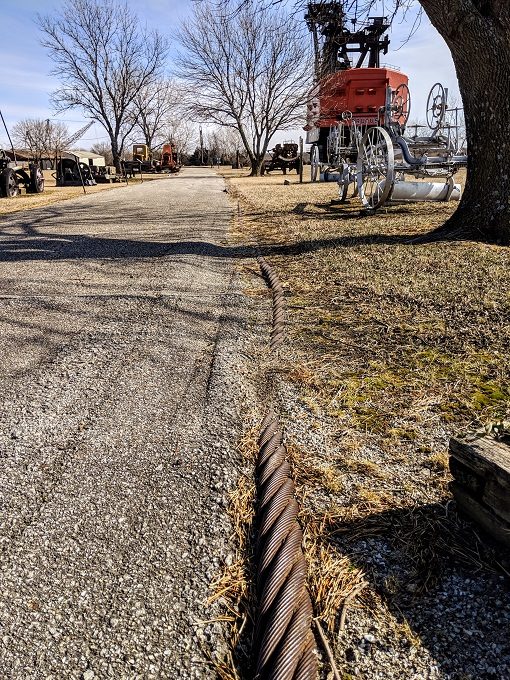
Another feature was a horse drawn grader from the 1800s. When comparing this to Big Brutus, it’s amazing how much technology and machinery have advanced within ~100 years.
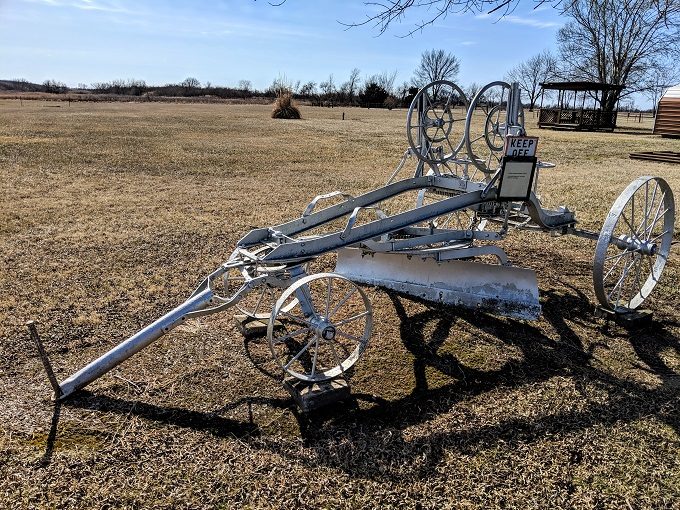
Outside Big Brutus
The polar vortex hit the area the day we visited, so we didn’t want to stand around outside for too long in the 12° F temperature. Shae and I therefore made our way down the path fairly quickly to check out the main attraction.
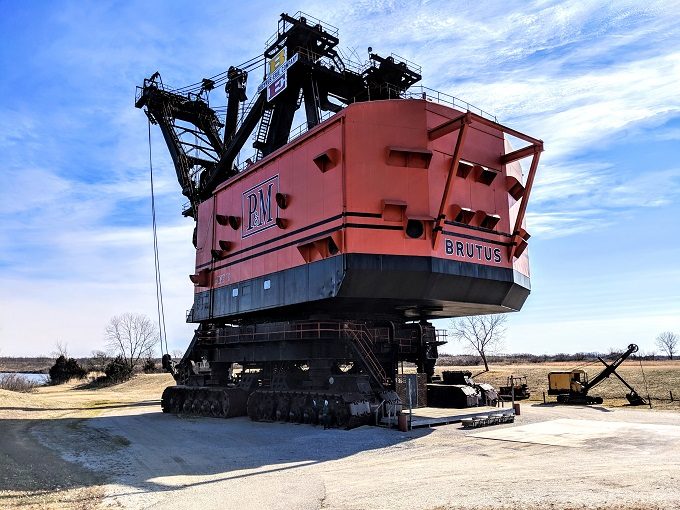
Big Brutus is enormous. It’s 160 feet high and weighs 9.3 million lbs. When it was used to remove the over burden to expose the layers of coal, it was the world’s second largest electric shovel. The largest was called the Captain and was three times the size at 28 million lbs – I can’t even imagine how large that must’ve looked!
The Captain is no more though as it was stripped down and used for scrap metal. Big Brutus didn’t meet the same fate upon retirement, so it subsequently took over the mantle as the World’s Largest Electric Shovel.
It can be hard to picture how big 160 feet and 9.3 million lbs is. To help give you an idea of scale, Shae is in the photo above – can you see her?
If not, she’s circled below:
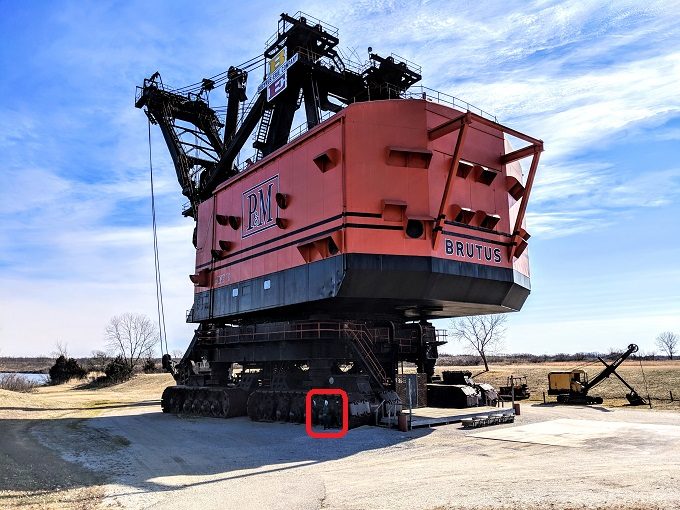
Yep, it’s big. So big that it took more than 150 railroad cars to bring the parts needed to construct the machine.
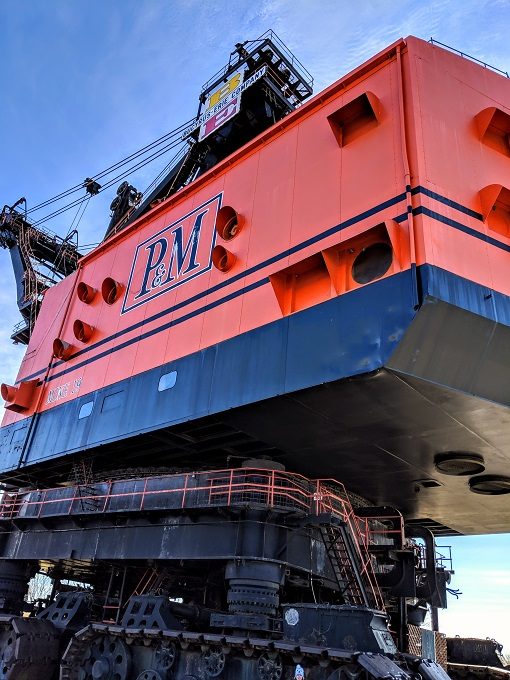
The crawlers alone are 7 feet high. There are 32 pads on each of the crawlers, with each pad weighing more than 2,000 lbs. Despite being so bulky, they had to be replaced frequently as the 9 million lb weight on top wore them down quickly. Big Brutus wouldn’t win any races on these crawlers though as its operating speed was only 0.22 mph.

The machine could turn 360 degrees thanks to its revolving frame that’s 45 feet in diameter. Each of those rollers are 19 inches across and were individually lubricated by a central lubricating reservoir inside the base portion of the machine.
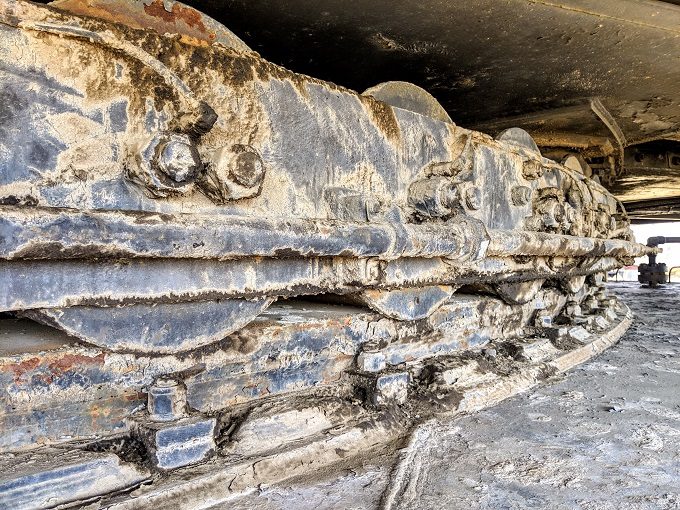
Big Brutus was built in 1962 and dug up coal for a living, recovering 9 million tons of coal during its 11 working years. It managed to dig up so much coal because its bucket had a capacity of 90 cubic yards.
That measurement meant nothing to me, but a sign next to the bucket said that’s approximately 135 tons of material which is still an insanely large number that’s hard to visualize.
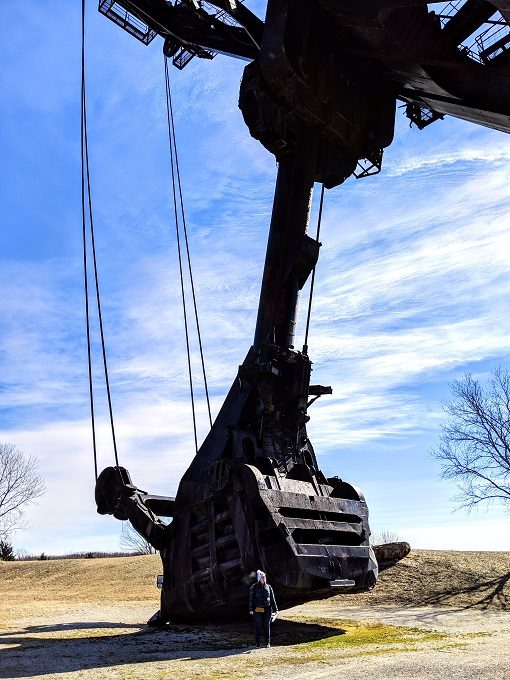
To make it a little easier to picture its size, here’s Shae inside the bucket.
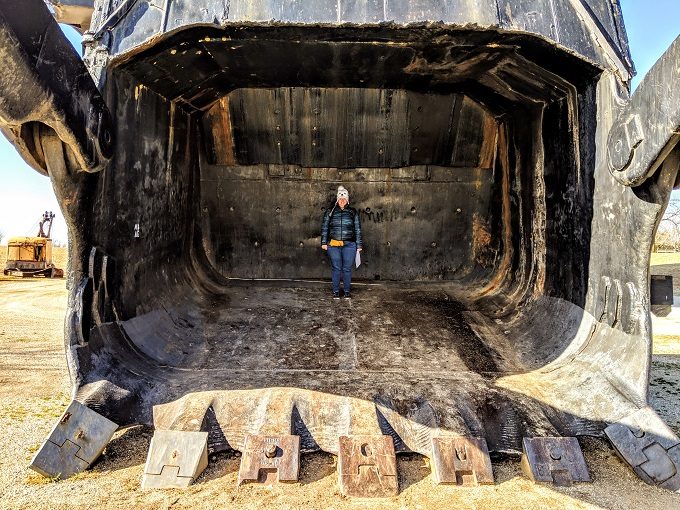
Inside Big Brutus
One of the great things about visiting Big Brutus is that you can climb up inside and explore it further.
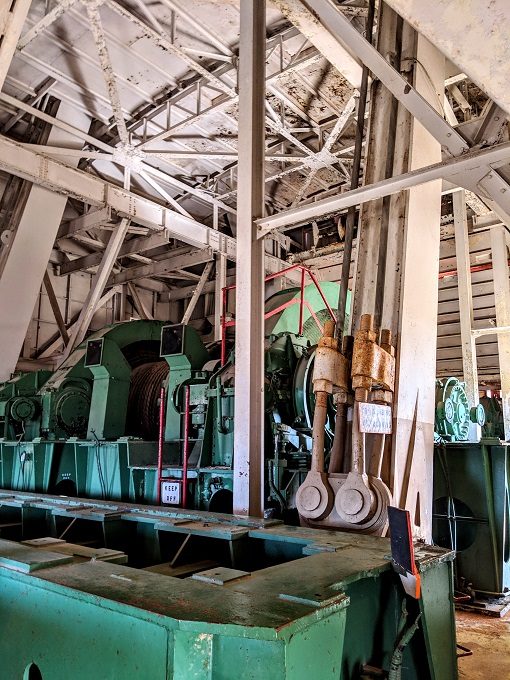
This means you can see the machinery that powered the electric shovel, a name that doesn’t adequately do justice to its capabilities.
For example, pictured below are the crowd gears. These operated the stick that was attached to the bucket.
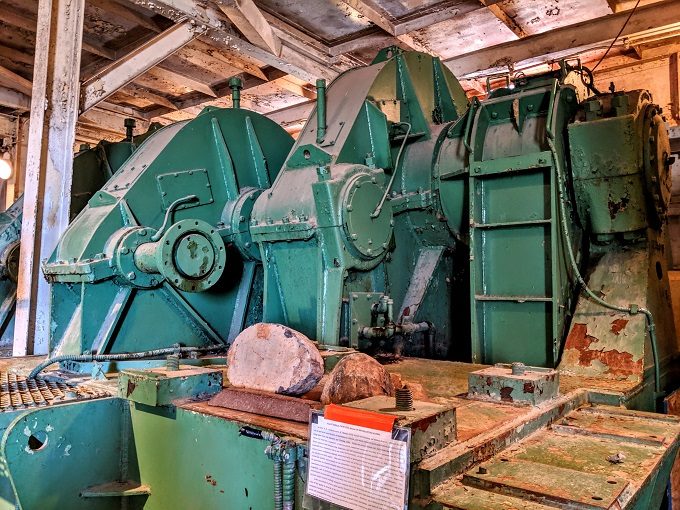
The transformers were huge…
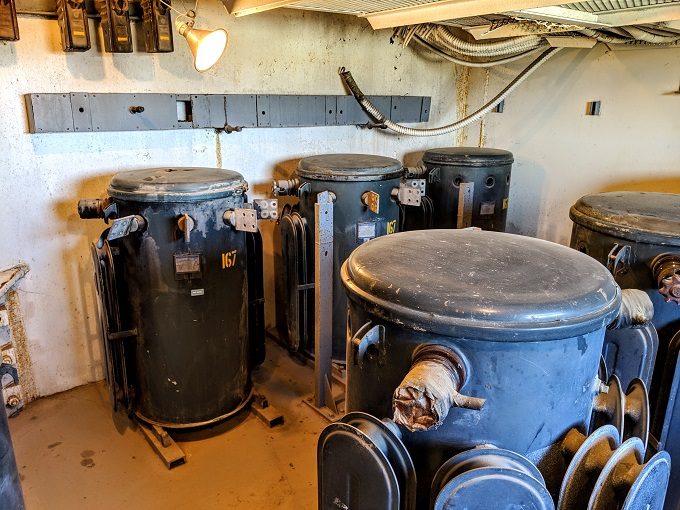
…as was the main hoist. Each side of the main hoist had 800 feet of wire rope; including the gears, it weighed almost 100 tons.

Once again, a sense of scale can be helpful, so here’s Shae next to it.
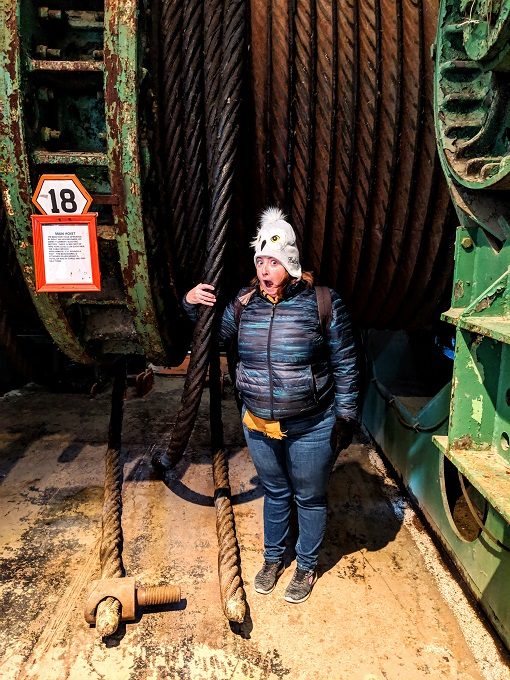
The cables themselves weigh ~25 pounds per foot. I was curious how heavy that would feel – here’s the result:
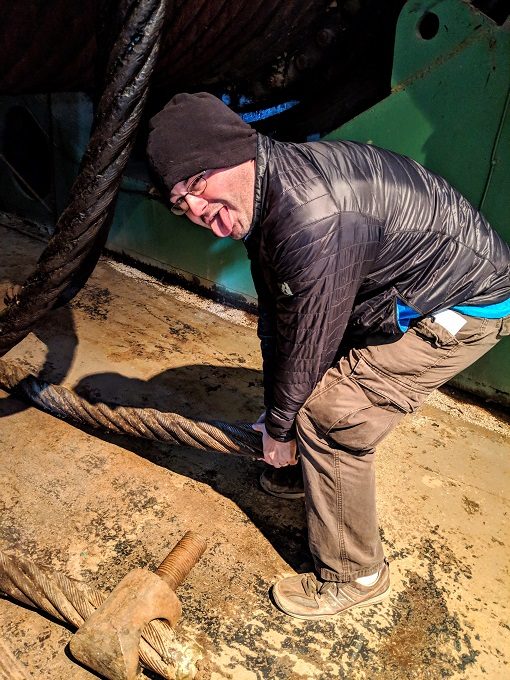
You can even check out the operator station. It’s amazing to think that two levers and a few buttons could wield so much power.
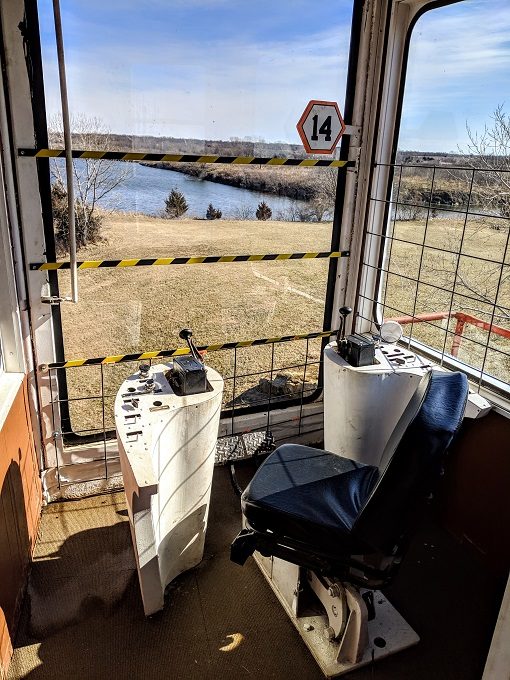
The operator station isn’t off-limits, so you can sit down and pretend like you’re digging up 135 tons of coal.
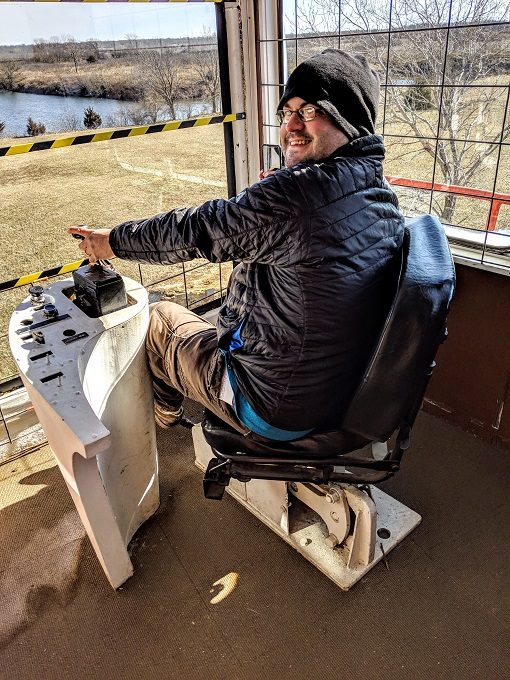
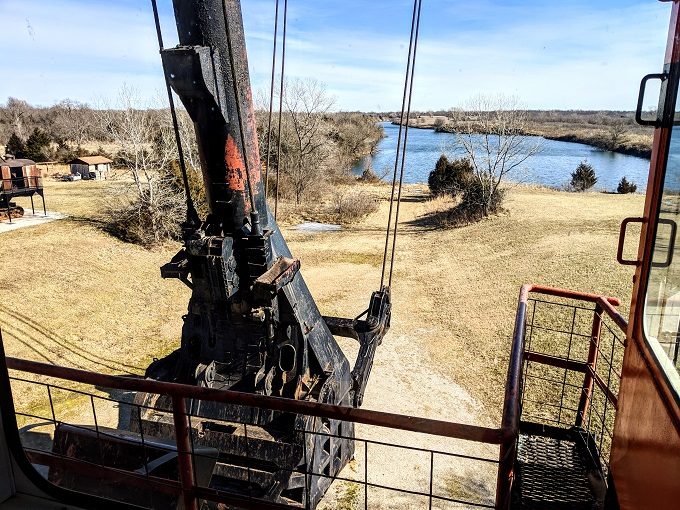
After wandering around inside, we stopped for a quick selfie outside before heading back into the warmth of the museum.
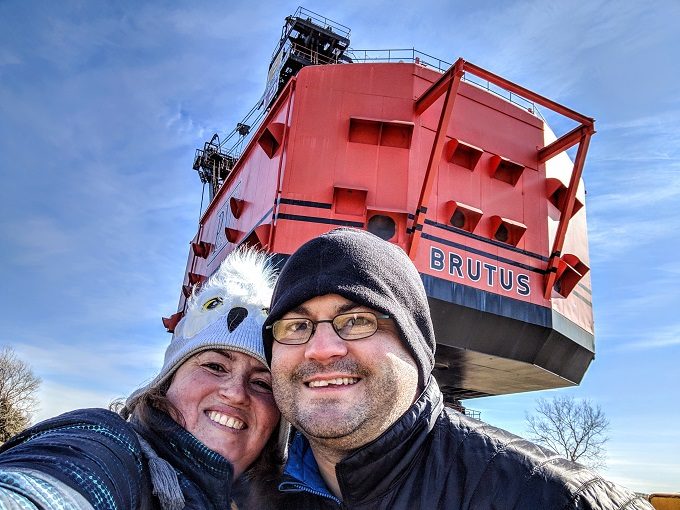
Final Thoughts
Big Brutus was far more fun that I imagined it would be. In my mind, it was going to be a large shovel we’d stop at quickly. In reality, the experience included the opportunity to explore the largest piece of equipment I’ll probably ever climb on (other than planes, etc).
The World’s Largest Electric Shovel is far more than just a standard roadside attraction, so check it out if you’ll be anywhere near the southeast corner of Kansas.
Big Brutus Ticket Prices
When we visited in January 2019, our adult tickets cost $8 per person. Tickets for seniors aged 65+ cost $7.50, children aged 6-12 cost $5, while children aged 0-5 were free.
Address
Big Brutus, 6509 NW 60th St, West Mineral, KS 66782
Great write on an incredible machine and museum. I’ve been there numerous times.
Just a FYI. Big Brutus never dug coal. It removed the over burden to expose the layers of coal below.
Thanks! I’ve fixed that part of the post – I appreciate you clarifying that.